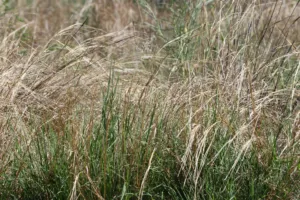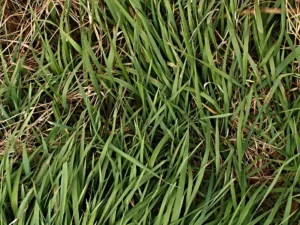Discover Why Your Lawn Is Discolored & How to Get It Green Again
Few things are more of a downer than stepping outside to a lawn with ugly brown spots. If you’re a homeowner in Robertsdale, Alabama battling these mysterious patches, you’re not alone. That discolored grass is an eyesore. But it’s also your lawn’s way of saying something’s wrong.
The truth? Those brown spots could stem from multiple sources:
- Fungal invaders silently attacking your turf
- Environmental stressors taking their toll
- Common lawn care mistakes with unintended consequences
- Tiny bugs creating big problems
Thankfully, it’s easy to pinpoint what’s really going on beneath the surface with the help of the professionals at TDI Services.
Typical Reasons for Brown Spots
1. Fungal Diseases
The warm climate in the Robertsdale, AL area creates the perfect breeding ground for lawn fungi. These invaders can transform lush green grass into patchy brown wastelands seemingly overnight. Here are the usual suspects:
- Brown Patch & Large Patch
- These aggressive fungi create expanding rings of dead grass that can quickly consume large areas of your lawn during humid spells.
- Dollar Spot
- Don’t let the name fool you. This fungus leaves behind coin-sized brown spots that multiply and merge into unsightly dead zones.
- Leaf Spot Varieties
- Particularly problematic for St. Augustine grass, these infections cause yellowing blades with distinctive dark speckles before turning entire patches brown.
- Spring Dead Spot
- Here’s a nasty surprise for warm-season grasses. This fungus hibernates through winter only to reveal circular dead patches around springtime.
- Fairy Rings
- These mysterious dark circles might look whimsical, but they’re actually signs of fungi decomposing organic matter beneath your lawn’s surface.
2. When Your Lawn’s Environment Works Against It
Sometimes disease isn’t the problem, but your lawn’s living conditions are. Common environmental stressors in Alabama include:
- Compacted Soil
- Constant foot traffic and dense soil prevent grass roots from accessing the air and nutrients they need to thrive.
- Excess Thatch Buildup
- When dead grass accumulates faster than it decomposes, it forms a thick mat that blocks water and fertilizer from reaching the soil.
- Drought & Heat Stress
- Our intense heat and sporadic rainfall can push grass into drought-induced dormancy, turning it brown until conditions improve.
- Uneven Watering
- Malfunctioning sprinklers or uneven watering create dry zones where grass simply can’t survive.
- Pet-Related Damage
- Our furry friends’ bathroom habits introduce concentrated nitrogen that literally burns circular patches into the lawn.
3. Lawn Bugs
Don’t underestimate the damage small insects can inflict. Here are the common yard bugs to look out for:
- Grubs: These C-shaped larvae feast on grass roots, creating large dead areas that detach easily from the soil.
- Chinch Bugs: Nearly invisible to the naked eye, these pests suck the life out of grass blades, leaving behind parched, straw-colored patches.
- Sod Webworms & Armyworms: Their caterpillar stage is particularly destructive, chewing through grass blades and stems with alarming efficiency.

How to Revive Your Lawn If It Has Brown Spots
1. Fungus First Aid
At the first sign of fungal infection, apply a quality fungicide according to label directions. Early intervention is crucial for recovery.
2. Master Your Watering Routine
- Deep soakings (1 inch weekly in winter or 2 inches in summer) promote deep root growth
- Morning watering allows grass to dry before nightfall
- Regular system checks prevent dry spots from forming
3. Relieve Soil Stress
Annual aeration and dethatching (when thatch exceeds ½ inch) dramatically improve your lawn’s health.
4. How You Mow Matters
- Follow the “one-third rule” for blade length
- Keep mower blades razor-sharp
- Leave nutrient-rich clippings in place (unless diseased)
5. Feed Your Lawn Wisely
A tailored fertilization schedule strengthens grass against stressors. Avoid nitrogen-heavy summer formulas that can worsen fungal issues.

Say Goodbye to Brown Spots for Good
Some brown spot issues can be handled DIY-style, but professional help is often the smartest solution. If your lawn isn’t responding to treatment (or you’d rather not play guessing games), contact your local lawn care and pest control services in Robertsdale, AL at TDI Services. With highly trained technicians and industry-leading products, we’ll take steps to help achieve your dream yard.
